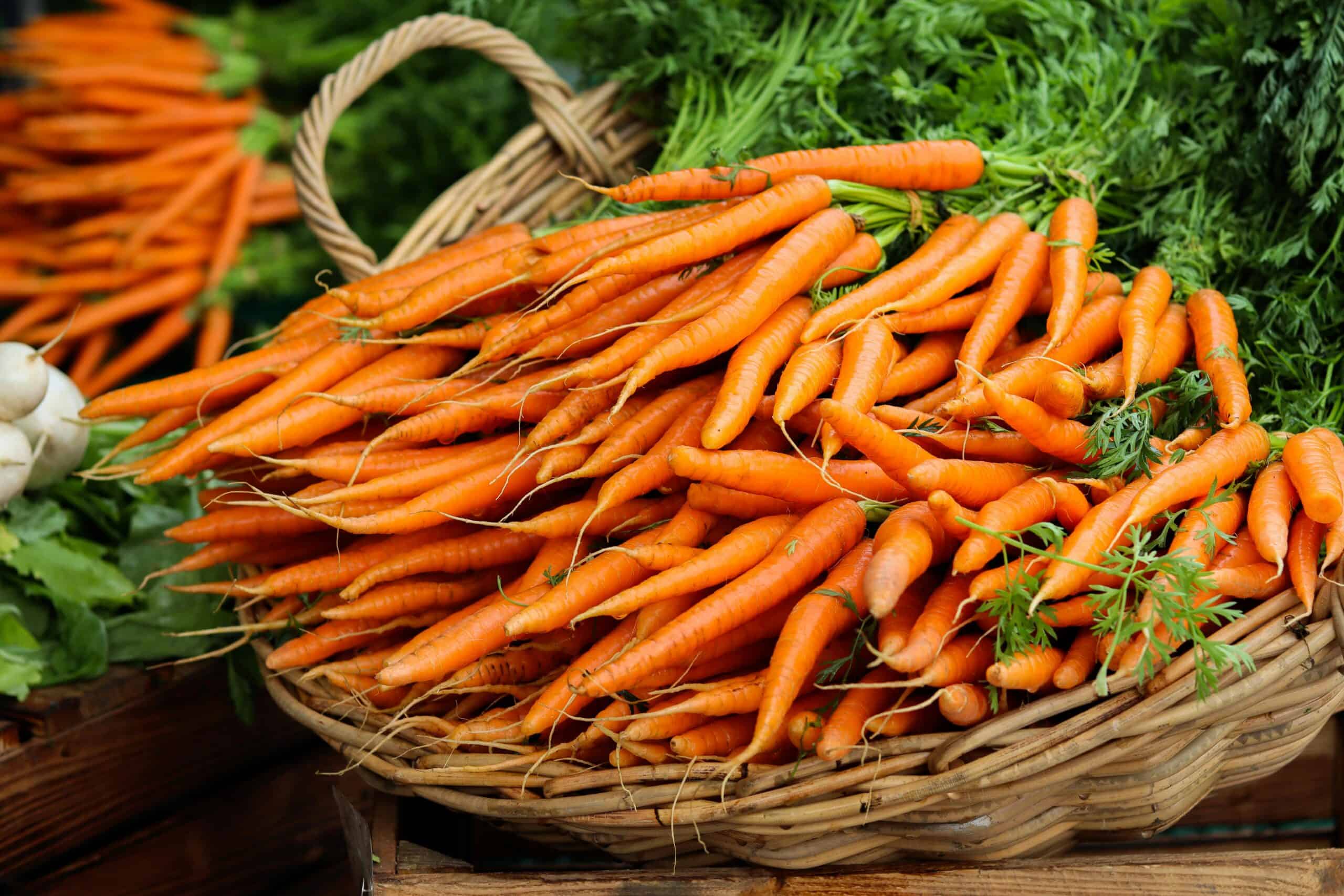Fiber may not be the hottest nutrient to discuss, but it’s one of the best things you can eat today. Its benefits reach far beyond the gut. From your waistline to your heart, fiber works hard to keep you healthy, lean, and living long.
Here’s the catch: your body doesn’t make fiber. To gain all its benefits, you have to eat it. And, statistically speaking, you’re probably not hitting the goal. 95% of Americans don’t eat enough fiber—most are barely getting half the fiber they need.
Today, you’ll find all the inspiration you need to fill up on fiber. Plus, I’ll point you to the best high-fiber foods you should start eating today.
What Exactly is Fiber?
Fiber, a.k.a. “roughage” or “bull,” is the portion of plant food that our bodies can’t digest. Fiber is a type of carbohydrate. While we break other carbs down into digestible sugar molecules, fiber passes through the intestinal tract nearly intact.
Fiber comes in different forms, and we need all three to thrive. Together, the three types of fiber work together to promote detoxification, prevent constipation, and support a healthy microbiome.
- Soluble Fiber: This type of fiber dissolves in water and forms a gel-like material. Soluble fiber collects bile molecules, metabolic waste products, hormones, and chemicals so they can be eliminated from the body. Oats, beans, peas, flaxseed, apples, carrots, and avocados contain soluble fiber.
- Insoluble Fiber: This type absorbs fluid and adds bulk to stools, making them easier to pass. Whole grains, nuts, seeds, beans, root veggies, and seeded fruit (like berries and kiwis) contain insoluble fiber.
- Prebiotic Fiber: This type of fiber feeds the good bacteria in your gut. It passes through the stomach into the colon, where gut bacteria ferment it and use it as food. Bananas, onions, and garlic are good sources of prebiotic fiber.
What Happens If I Don’t Eat Enough Fiber?
Our human ancestors were consuming around 100 grams of fiber each day! Today, most Americans are eating a tenth of that number. We’ve evolved to eat non-fiber foods. An offshoot of that evolution is a host of chronic diseases, including cancer, cardiovascular disease, Type 2 diabetes, bowel disease, and kidney disease.
Eating too little fiber could cause increased inflammation throughout your body. Studies have also shown that fiber is crucial for a strong immune system. Plus, not eating enough fiber makes losing weight and keeping it off a lot harder.
According to a Harvard study, people who ate the most fiber-rich foods had a lower risk of developing chronic disease and dying overall. Another large body of observational research found that eating just 10 additional grams of fiber per day can help decrease your risk of early death by 10 percent! That’s a good reason to eat your broccoli!
Counting your fiber isn’t difficult. A quick look at the nutrition label or a Google search will tell you how much fiber is in the foods you eat. According to the research, finding (and upping) your fiber intake will add years to your life.
Can Fiber Help Me Lose Weight?
Fiber is critical for weight loss. Research shows that high-fiber diets are associated with lower body weight and less body fat, even when calories are not restricted. If you want to lose weight and keep it off, eat more fiber!
Why Fiber is Crucial For Women
Most of us think of fiber as a way to promote gut health, but fiber is also a crucial player in hormonal balance. As women, hormonal balance is critical for how we feel and how we age. After the age of 35—when perimenopause brings symptoms like hormonal imbalance, weight gain, and constipation—our need for fiber increases.
Fiber regulates levels of estrogen, progesterone, and testosterone in many ways involving your digestive tract, liver, ovaries, and blood circulation.
Here’s one example:
- If your body has too much estrogen, your liver will take the excess estrogen and release it into your digestive tract to be eliminated in your stool.
- If you suffer from constipation, the excess estrogen in your digestive tract can be reabsorbed and enter back into circulation.
- Fiber, however, can save the day. Not only does it help promote regular bowel movements and a healthy gut microbiome, but certain fibers move through the digestive tract and bind to the excess estrogen, ensuring that it’s eliminated and not reabsorbed!
Filling up on fiber will help you feel your best and keep your hormones in balance.
How Much Fiber Do I Need?
Today, we’re consuming a measly 10 grams of fiber a day. That’s insufficient to promote a healthy gut and ward off chronic diseases. I train all my clients to aim for at least 30 grams of fiber daily. Personally, I shoot for 50 grams!
The Best High-Fiber Foods
Get your fix with these 10 high-fiber foods:
- Jackfruit: Not only does jackfruit contain triple the average amount of protein in fruit, it’s also packed with fiber (one cup contains about 3 grams). Plus, it’s rich in magnesium, vitamins C and B, lowers inflammation, and fights against heart disease!
- Chia Seeds: The nutritional content of these tiny seeds will blow your mind. Grab a bag at the grocery store if you want an easy way to boost your fiber intake. Just one ounce of chia seeds (two to three tablespoons) provides about 10 grams of fiber!
- Navy Beans: While all beans are a great source of fiber, navy beans lead the pack with 19 grams per cup!
- Quinoa: Quinoa offers a wealth of health benefits. It’s high in protein, antioxidants, and Omega-3 fatty acids. It also will bump up your daily fiber by 5 grams per cooked cup.
- Oats: Oats are a great source of protein, vitamins, minerals, and phytonutrients. This easy breakfast offers magnesium, iron, phosphorous, zinc, and vitamins B1 and B5. ½ cup of dry oats contains about 4 grams of fiber.
- Bulgur: A key ingredient of the Middle Eastern dish, tabbouleh, bulgur is a type of wheat. It cooks up in a few minutes and is packed with more fiber than any other grain—8 grams per cooked cup!
- Carrots: These sweet, crunchy snacks are full of fiber! One cup contains 3.4 grams. Add them to your lunch bag for an easy fiber boost.
- Collard Greens: While any dark leafy green is a great source of fiber, collard greens contain the most. One cup of boiled collards offers a whopping 8 grams of fiber!
- Broccoli: Your mom was right—you should eat your broccoli! It boosts the immune system, helps with iron absorption, and even promotes collagen production (that means fewer wrinkles!) Plus, one cup of cooked broccoli offers 5 grams of fiber.
- Guava: Mangos, persimmons, and raspberries are close behind, but guava wins the fiber race at 9 grams per cup.
Don’t Fast-Track Fiber!
Loading up on fiber too quickly can demolish your digestion. Increase your fiber intake gradually, giving your body and your gut bacteria time to adjust.
Adding fiber slowly will help you avoid gas, bloating, cramps, and bowel irritation. Start by tracking how much fiber you’re currently eating. Then, increase this number by about 2 grams per day.
Give your body the food it needs to thrive. Try one of the 10 fiber-rich foods above this week.
For more helpful nutrition and weight loss tips like this, join my weekly newsletter to get my latest guidance!



